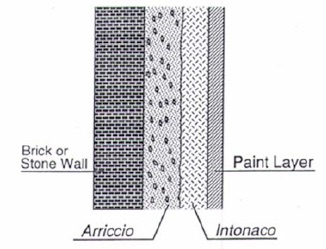Archaeological tours, packages and exclusive multy day excursions in Campania for tourists, lovers,
scholars and students.





Archaeological tours, packages and exclusive multy day excursions in Campania for tourists, lovers,
scholars and students.
The etymology of the term describes the technique, which consists in applying the color, in the form of pigments, directly on the fresh plaster to facilitate the carbonation of the lime, a chemical reaction between the lime present in the plaster and the carbon dioxide of the air that favors the fixing of the colors.
The decorations and the paintings of Pompeii and Herculaneum were performed for the most part with this technique. Already many famous writers of antiquity, as Vitruvius and Pliny, we have described a wall painting technique done with plaster is still wet. An excerpt from a text of Pliny, which was described a process of waxing the painted walls, has long been mistakenly believe that the Roman paintings were encaustic, that is with the addition to the colors of hot wax or other organic substances capable of resisting moisture.
Only in 1967, after numerous analyzes of the painted, it was concluded that they were painting in fresco, and the excellent preservation was due to a careful process of grinding and crushing of the wall which gave unity to the paint layer. The layer of wax on the fresco was probably used to protect some delicate colors, among which the cinnabar that the sun tended to darken.


Fresco by Villa dei Misteri
FRESCO
Pompeii Tour guide - Herculaneum Tour guide - Stabiae Tour guide - Oplontis Tour guide - Naples Tour guide
Amalfi Coast - Sorrento - Positano - Paestum Tour guide - Capua Amphitheater - Procida - Ischia - Capri
Copyright © Pompeiin.com - E-mail: info@pompeiin.com

